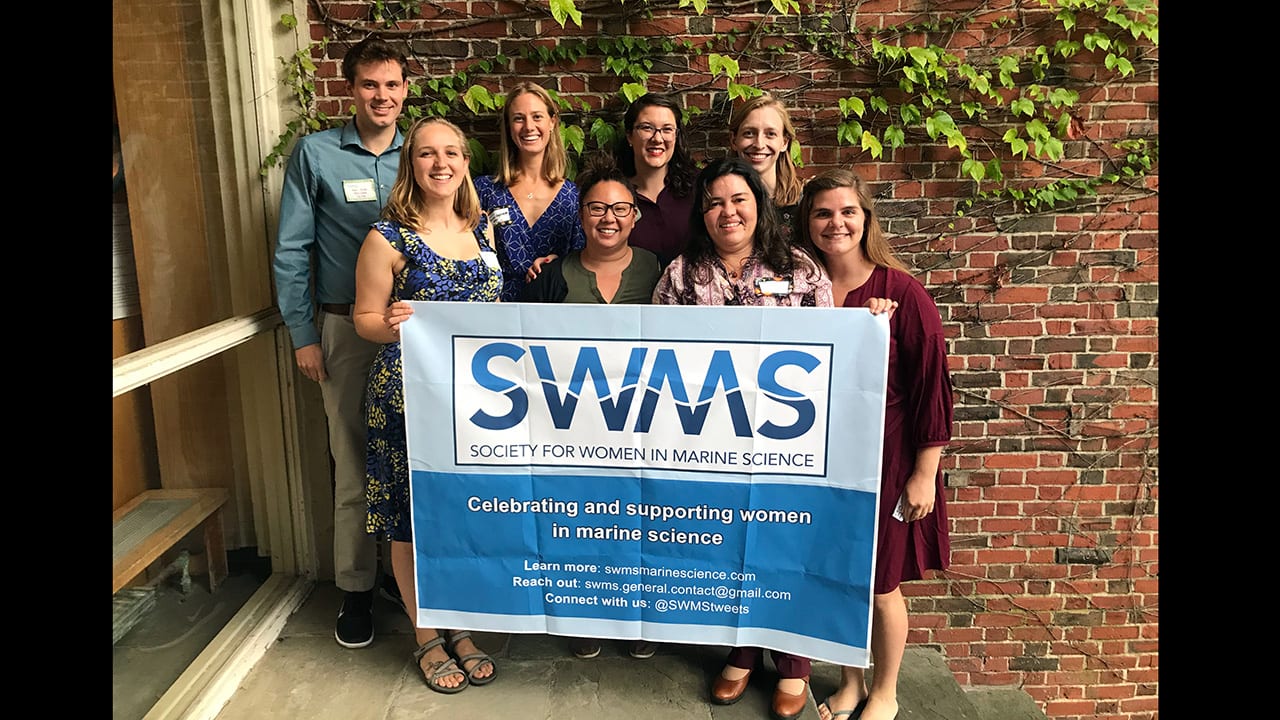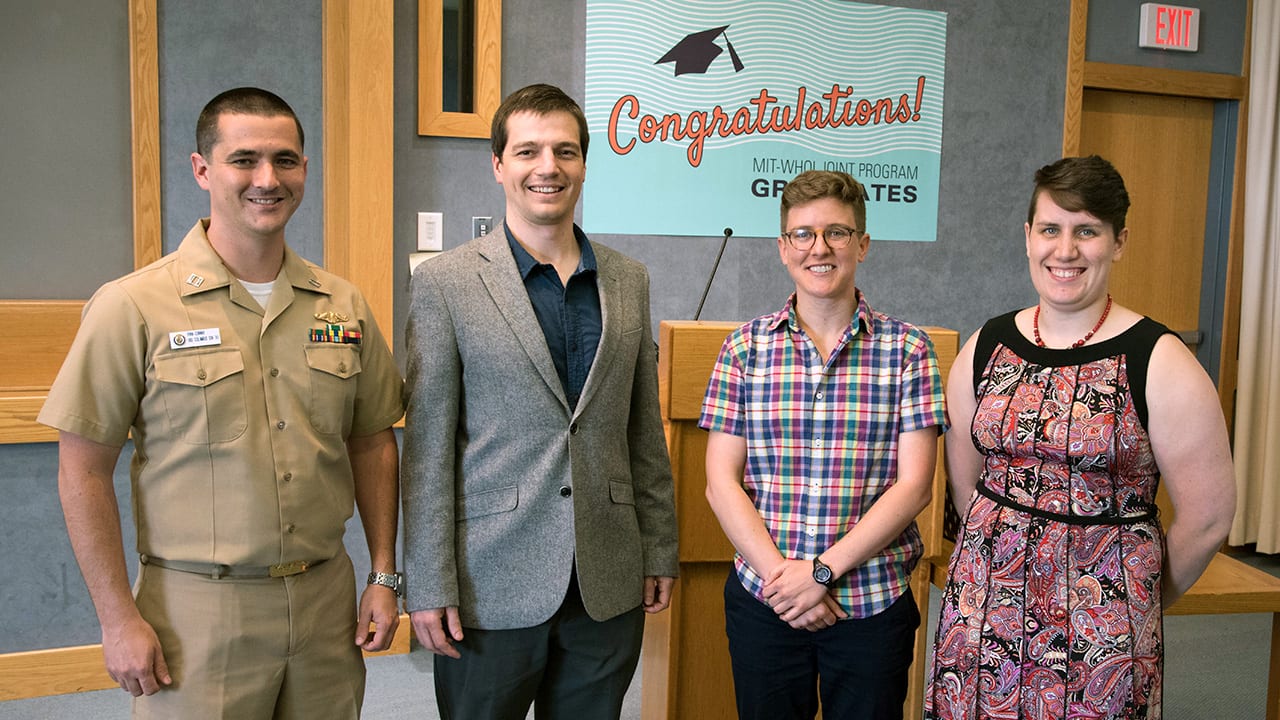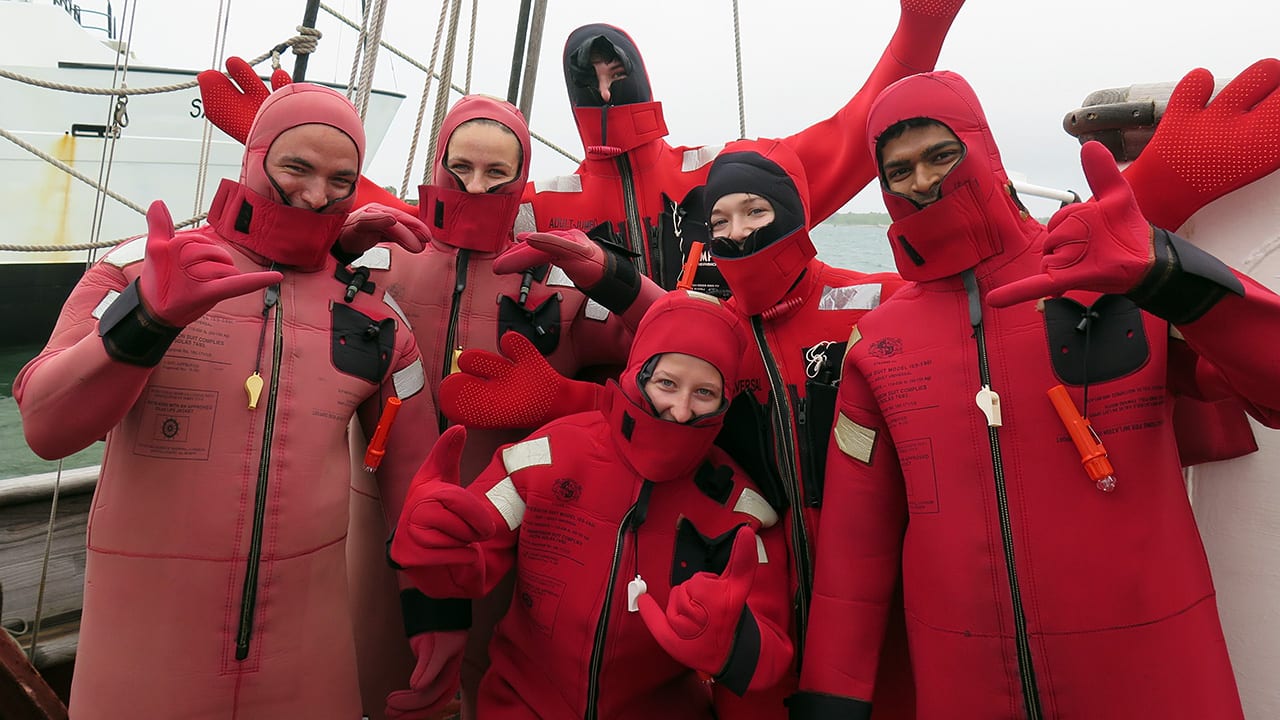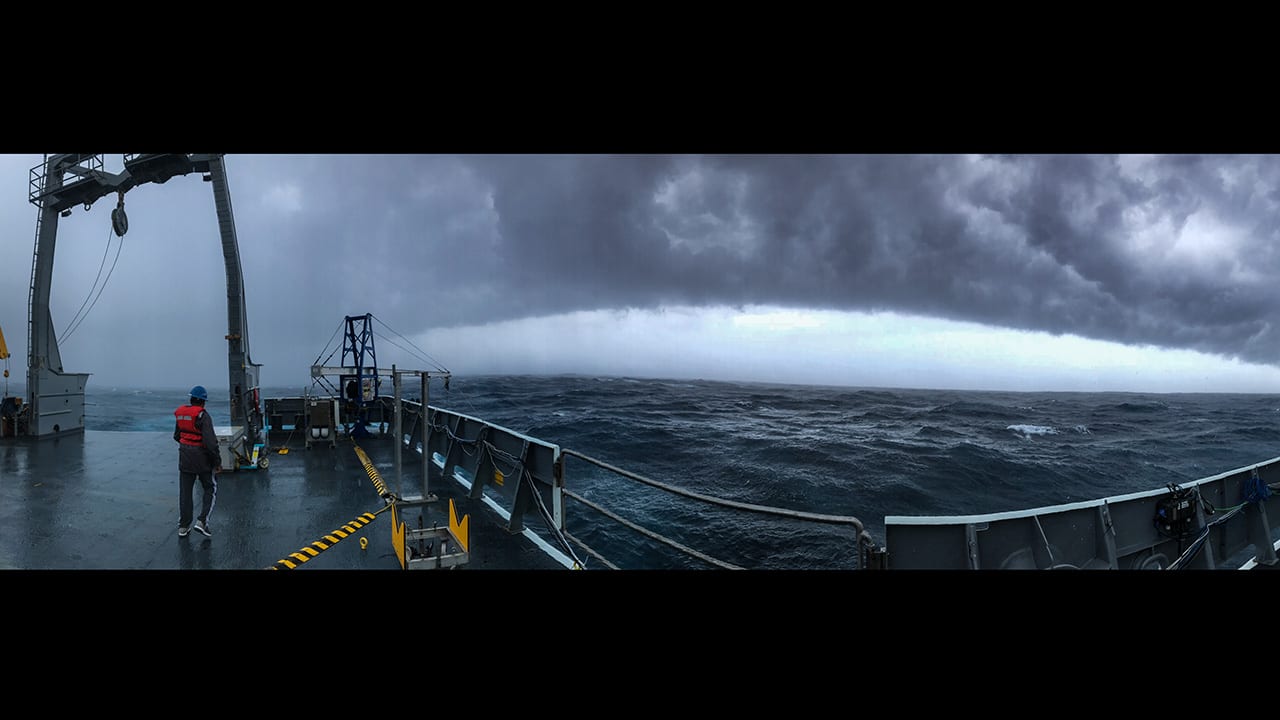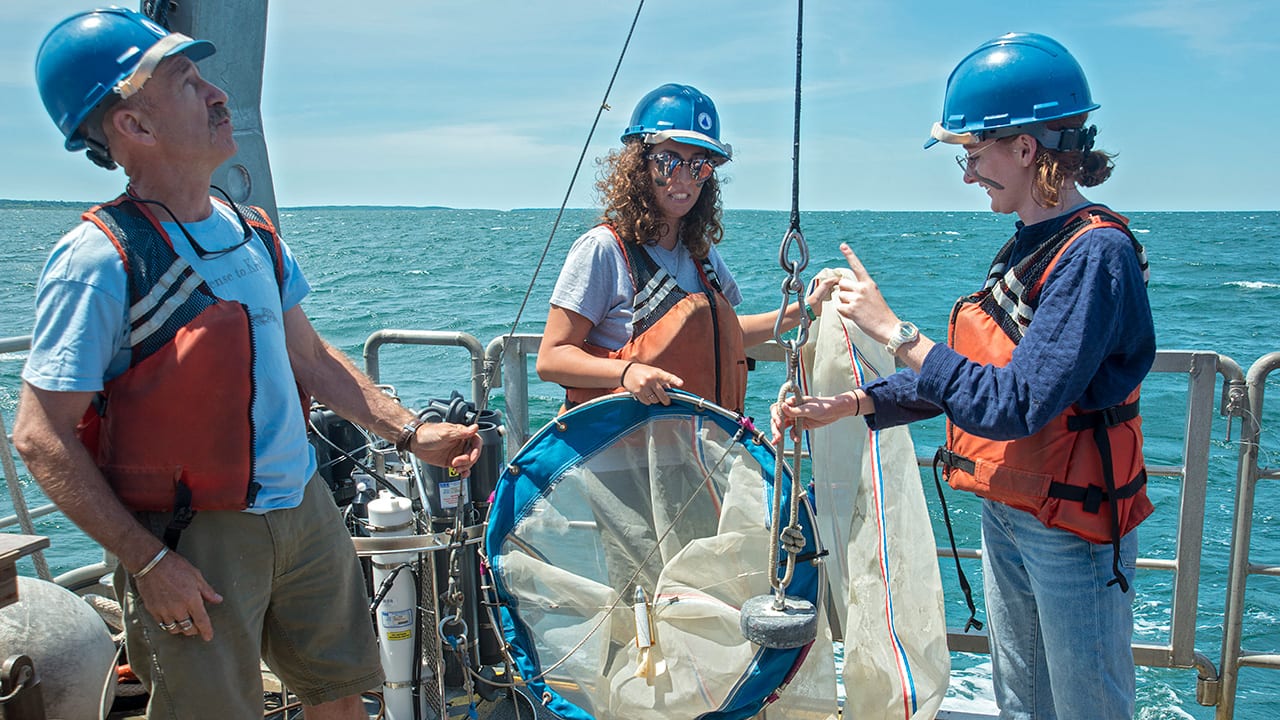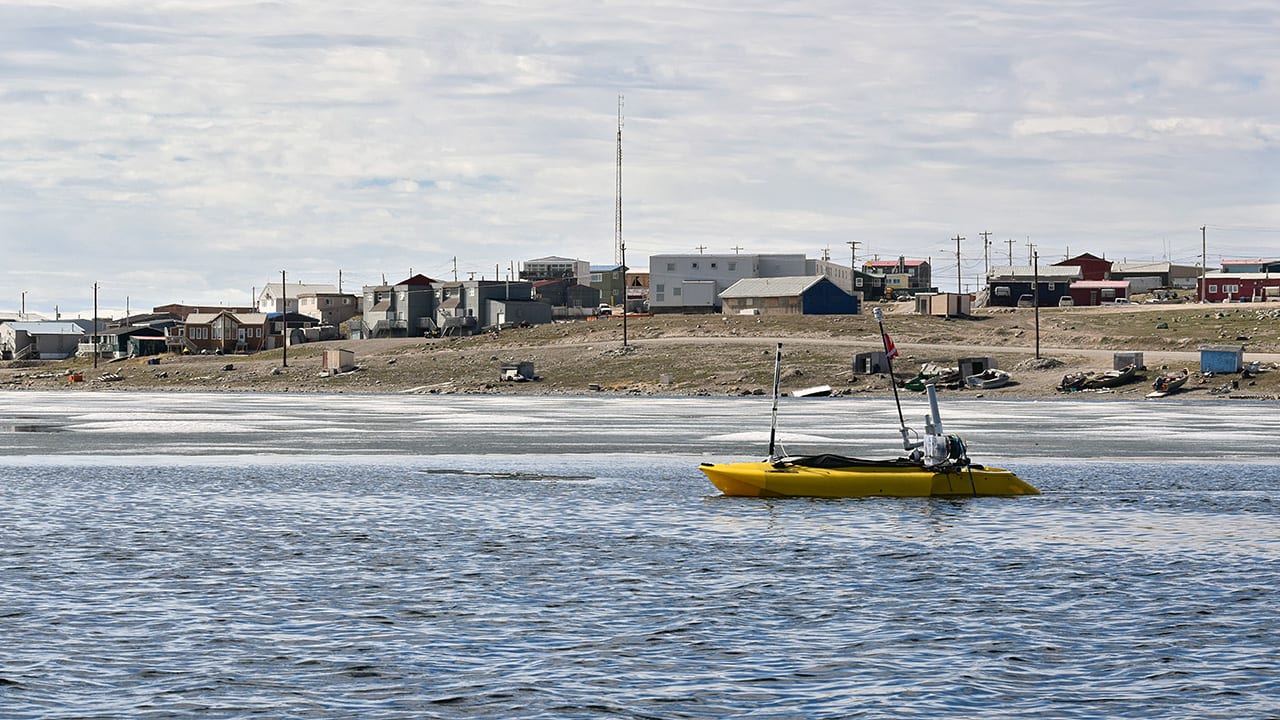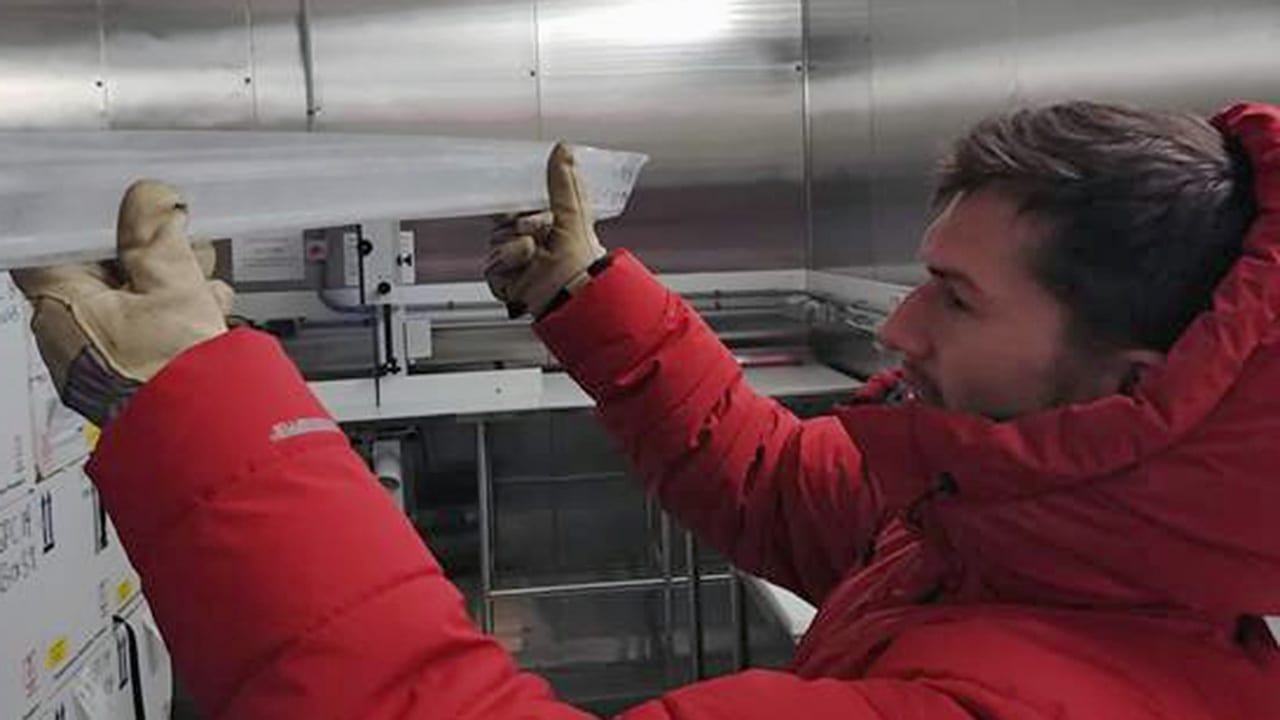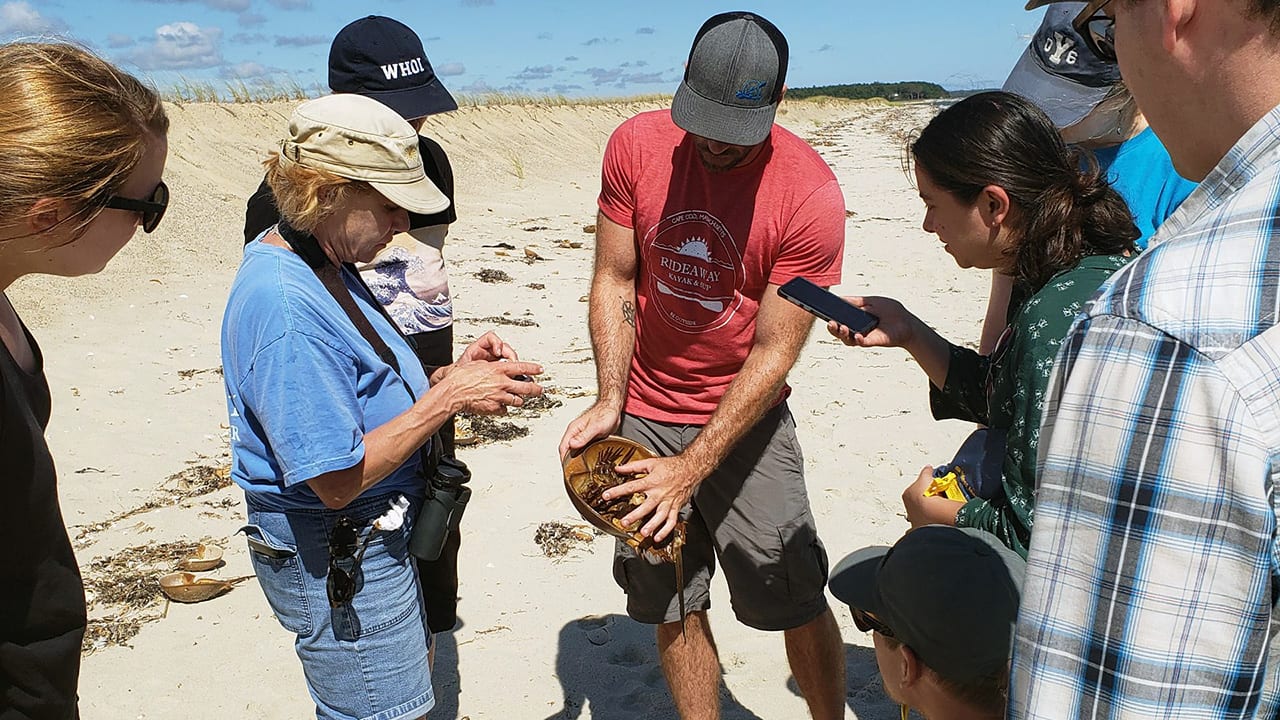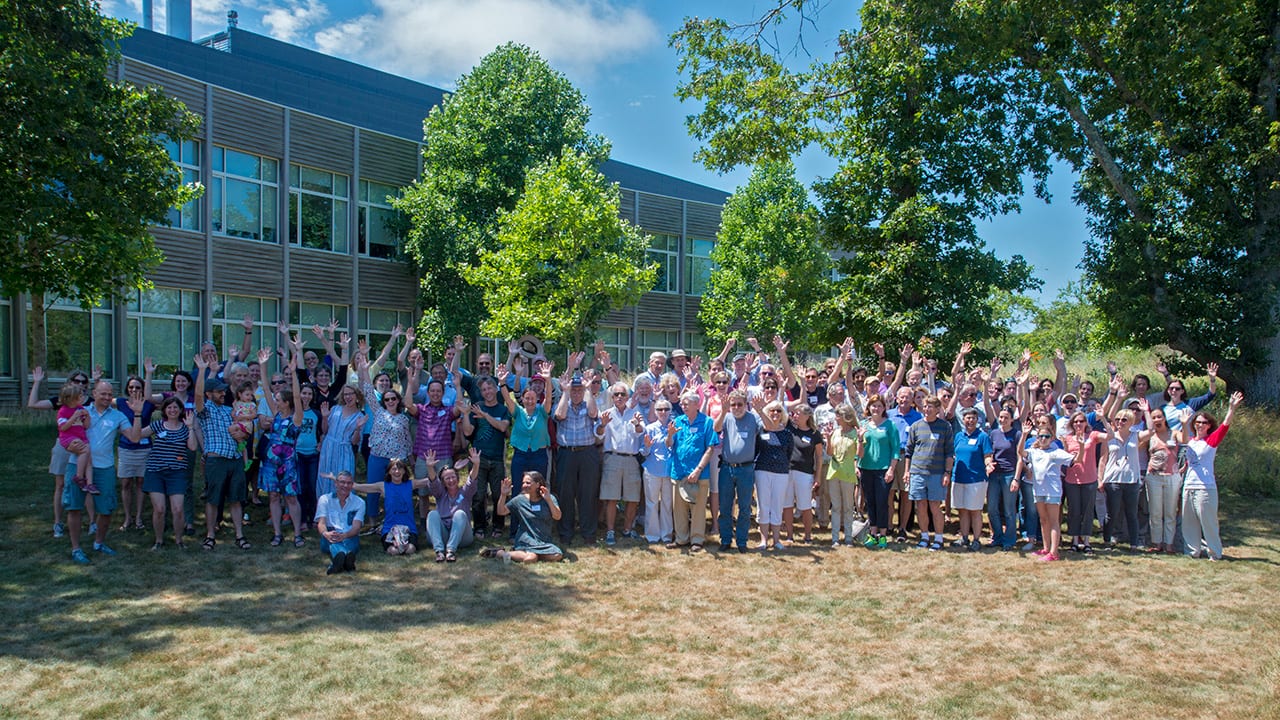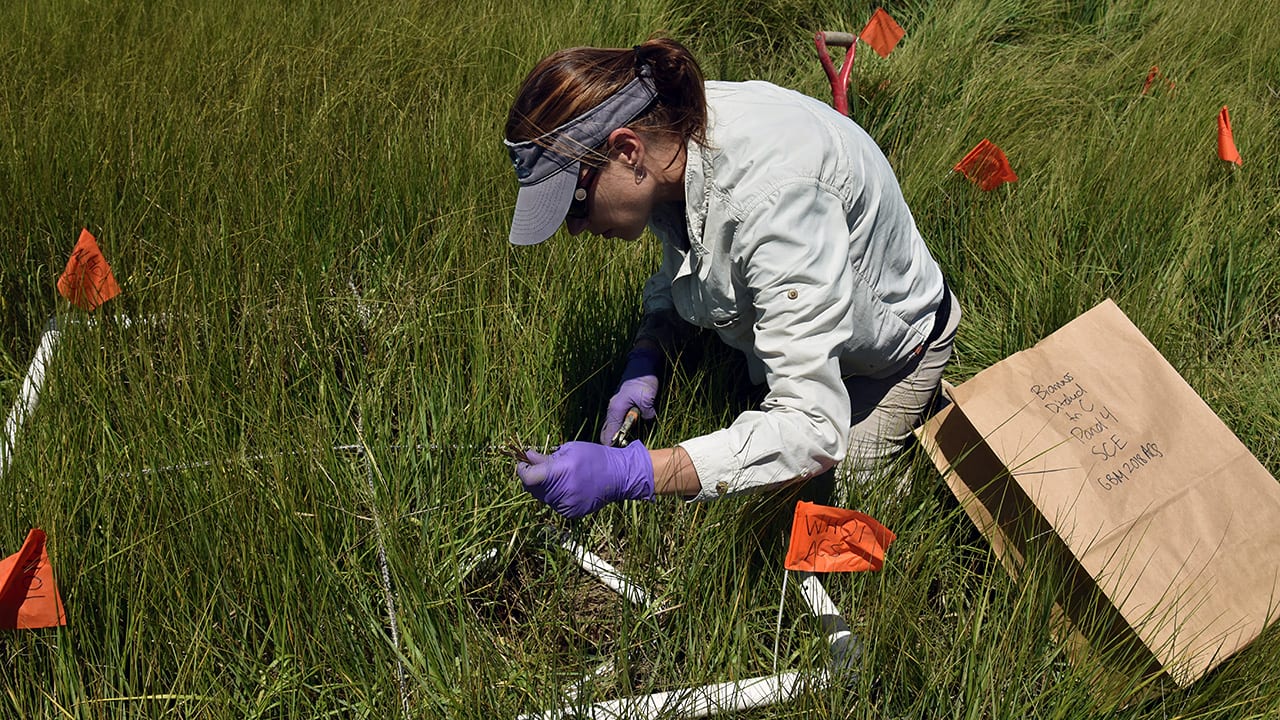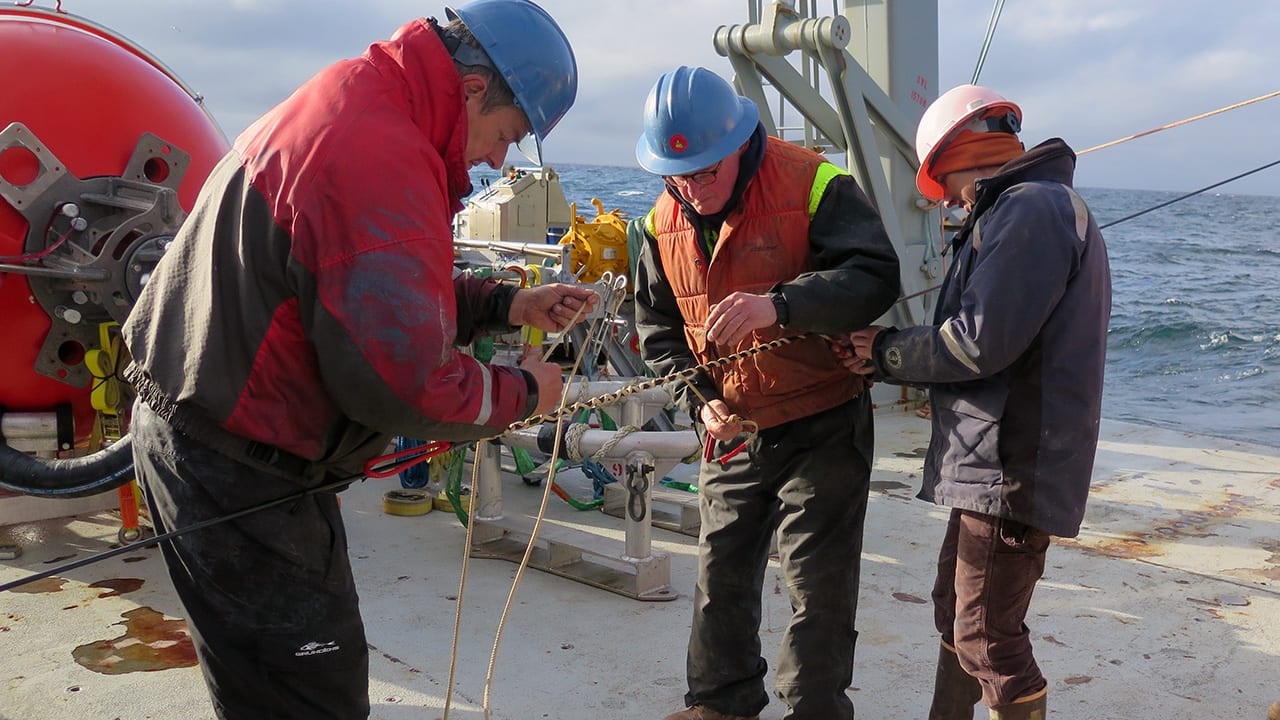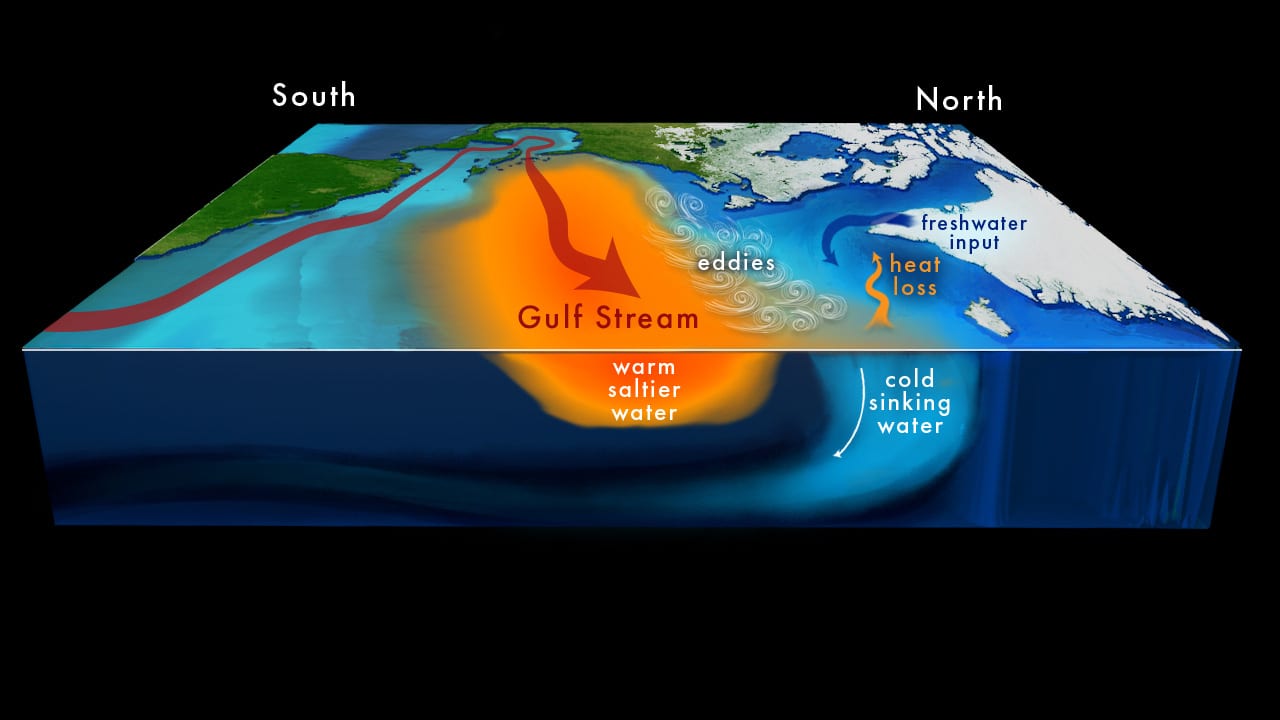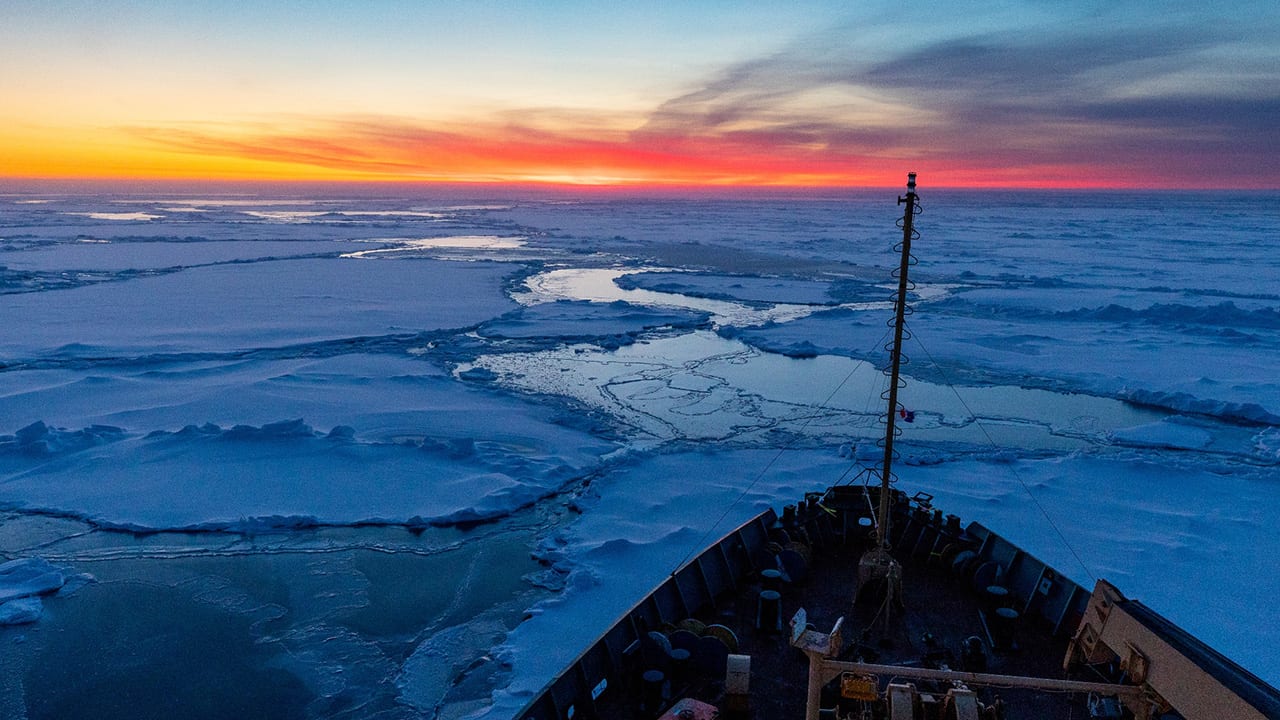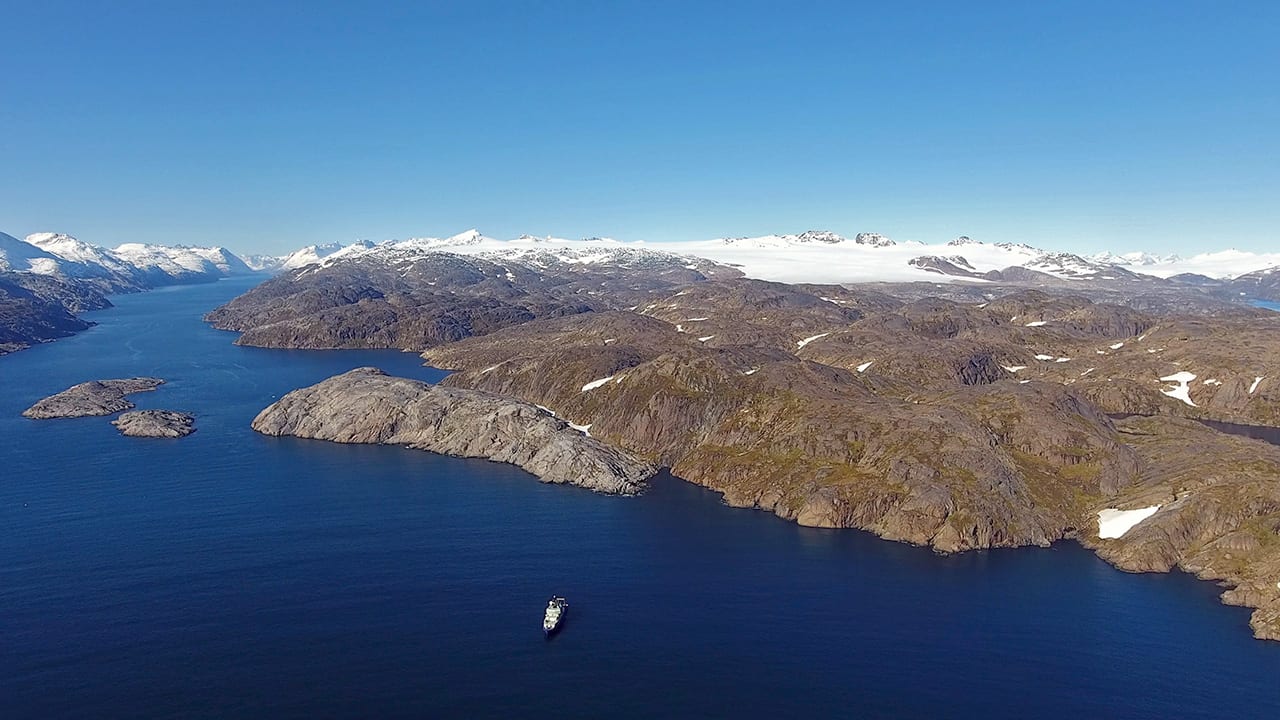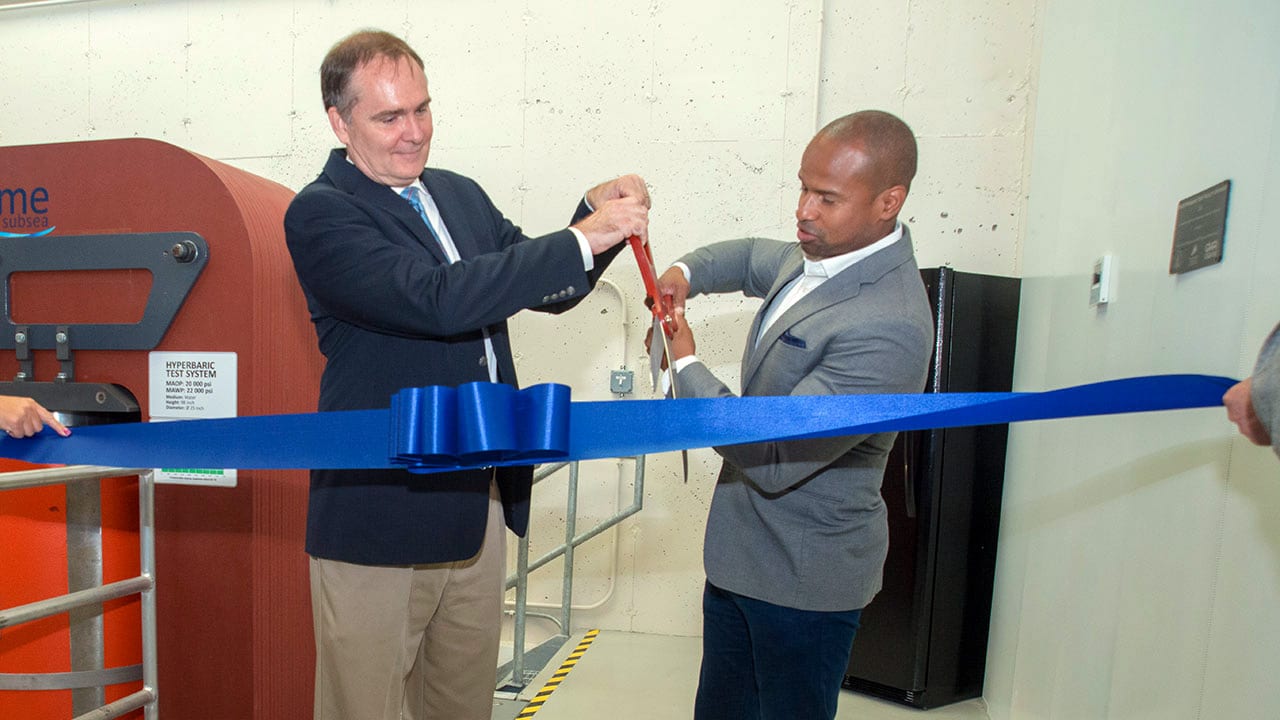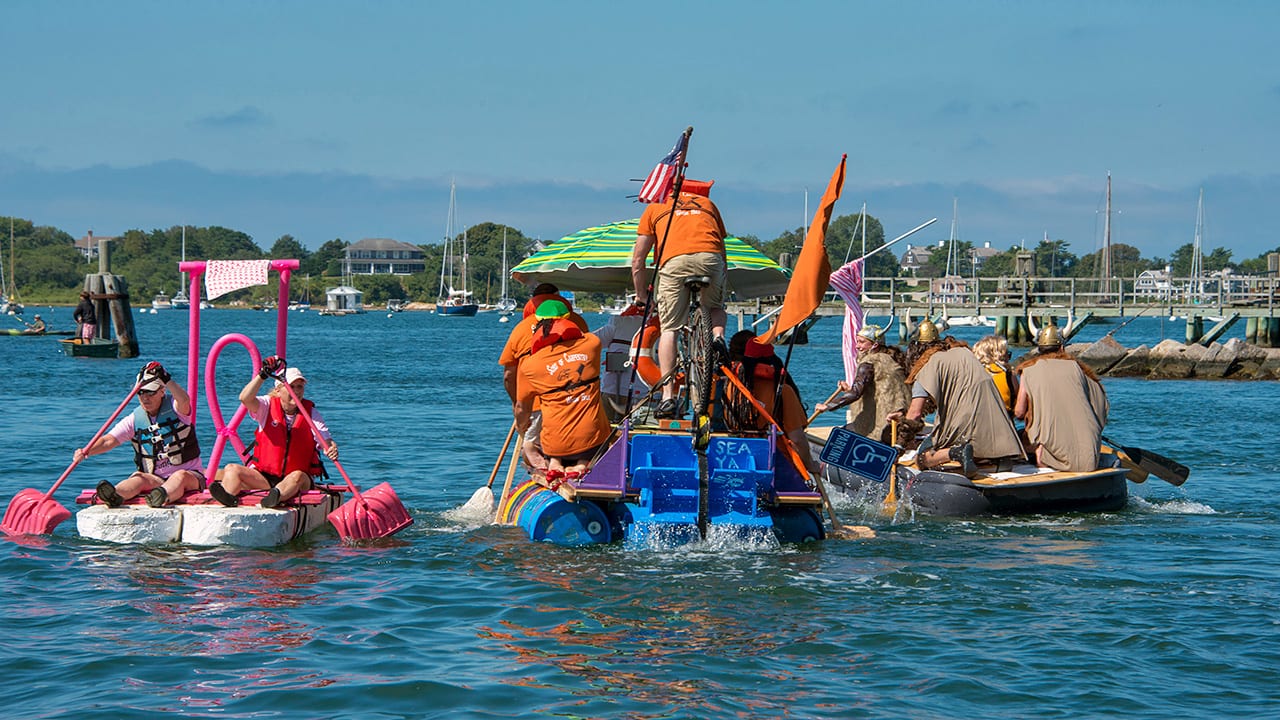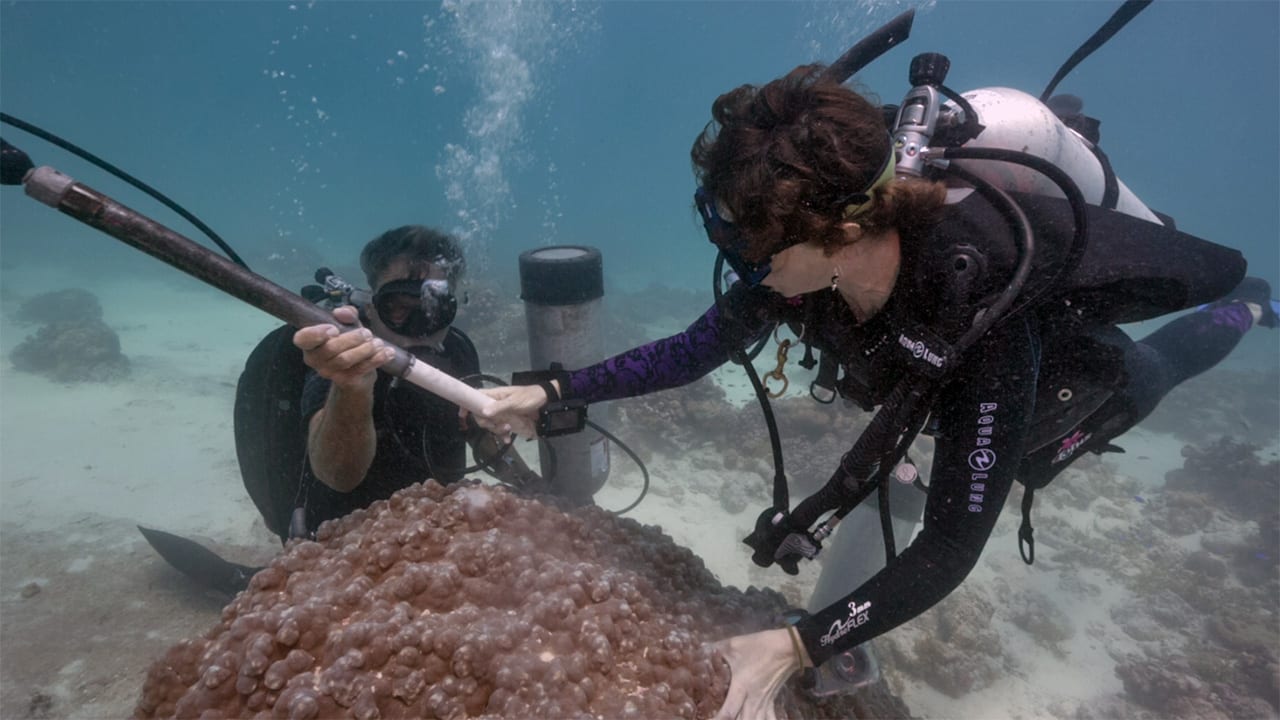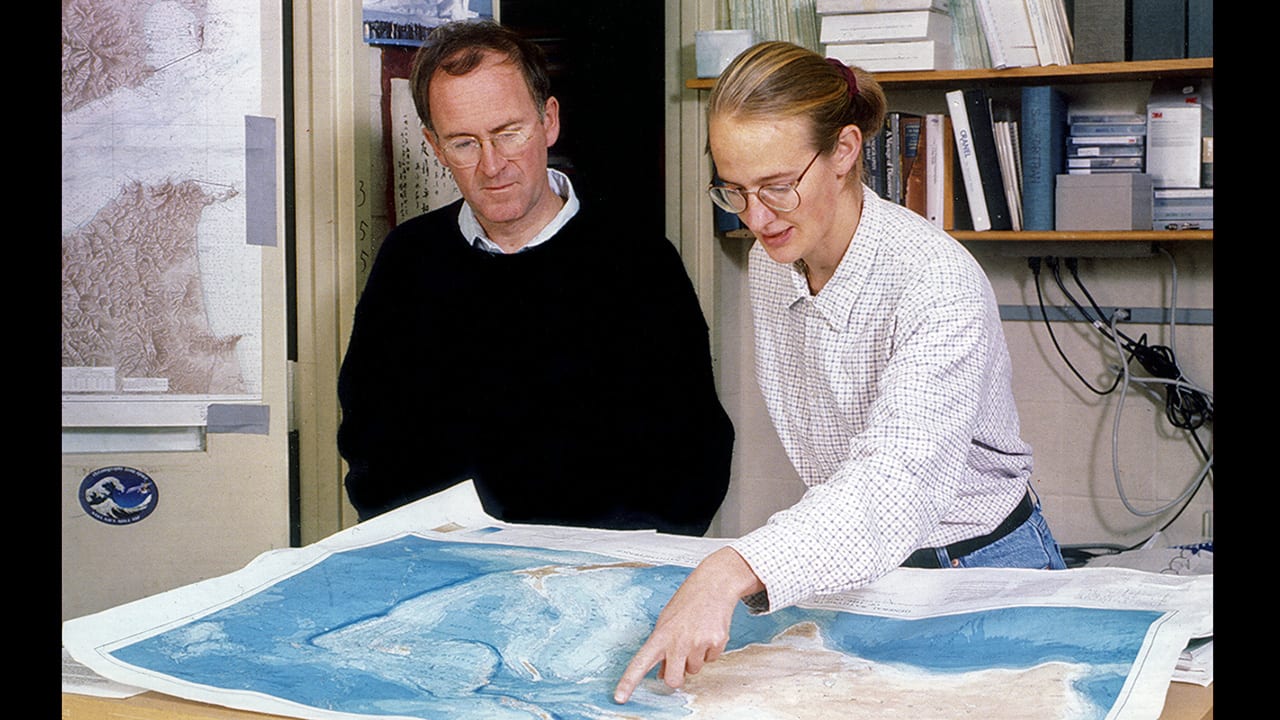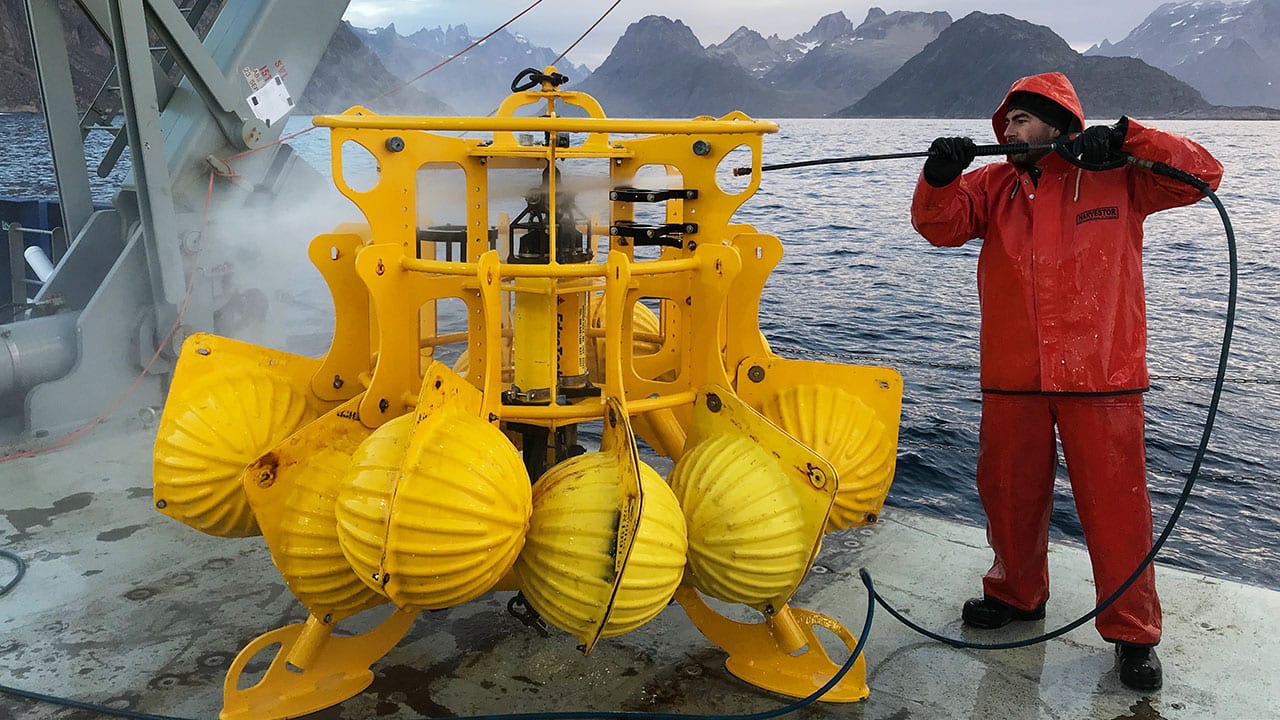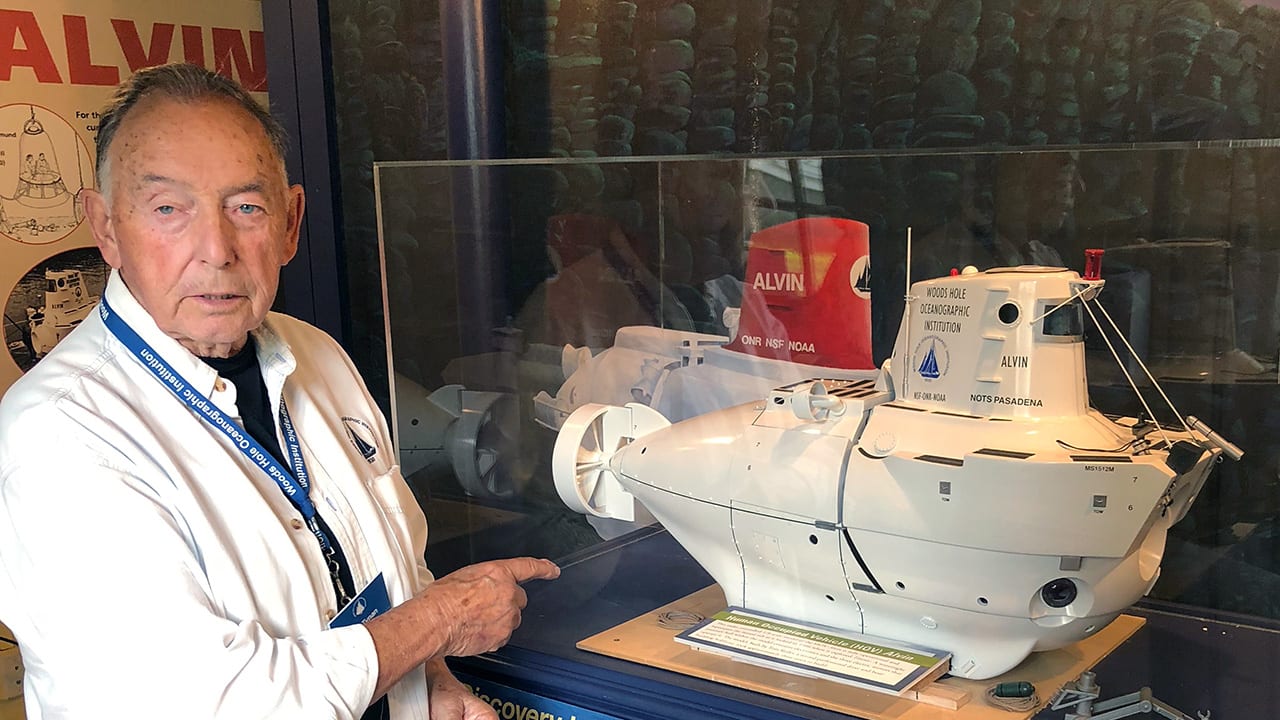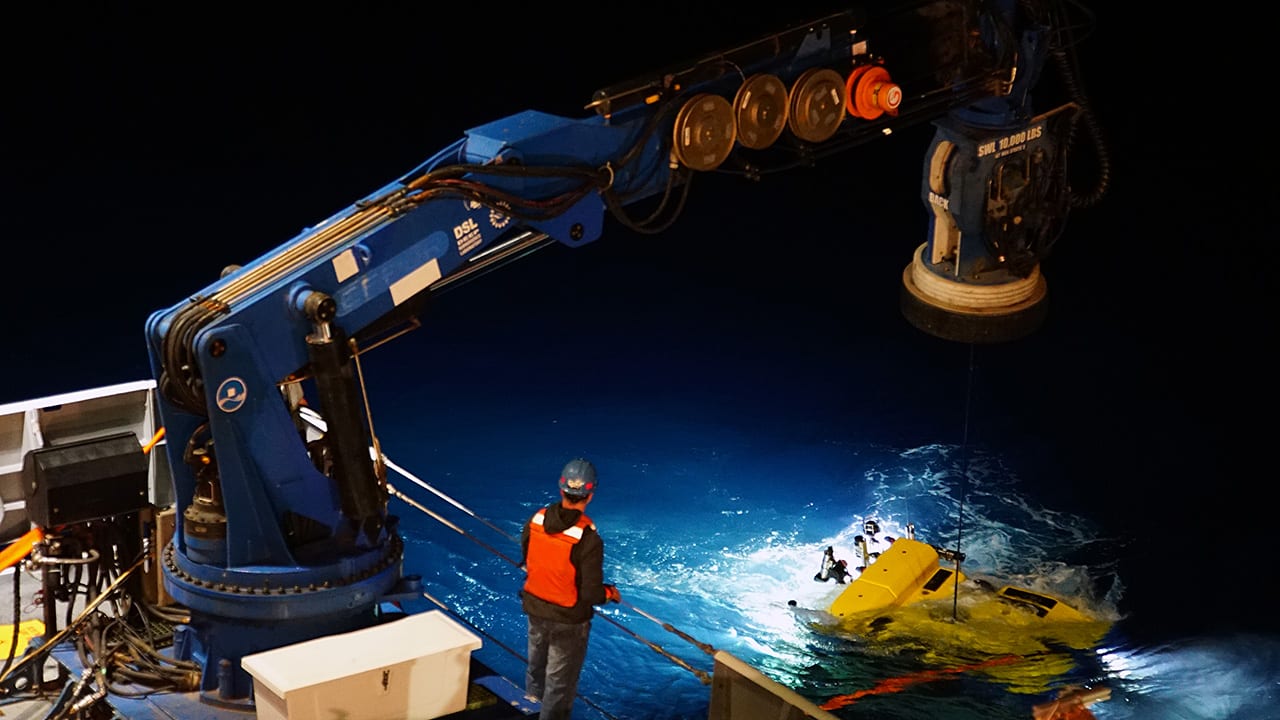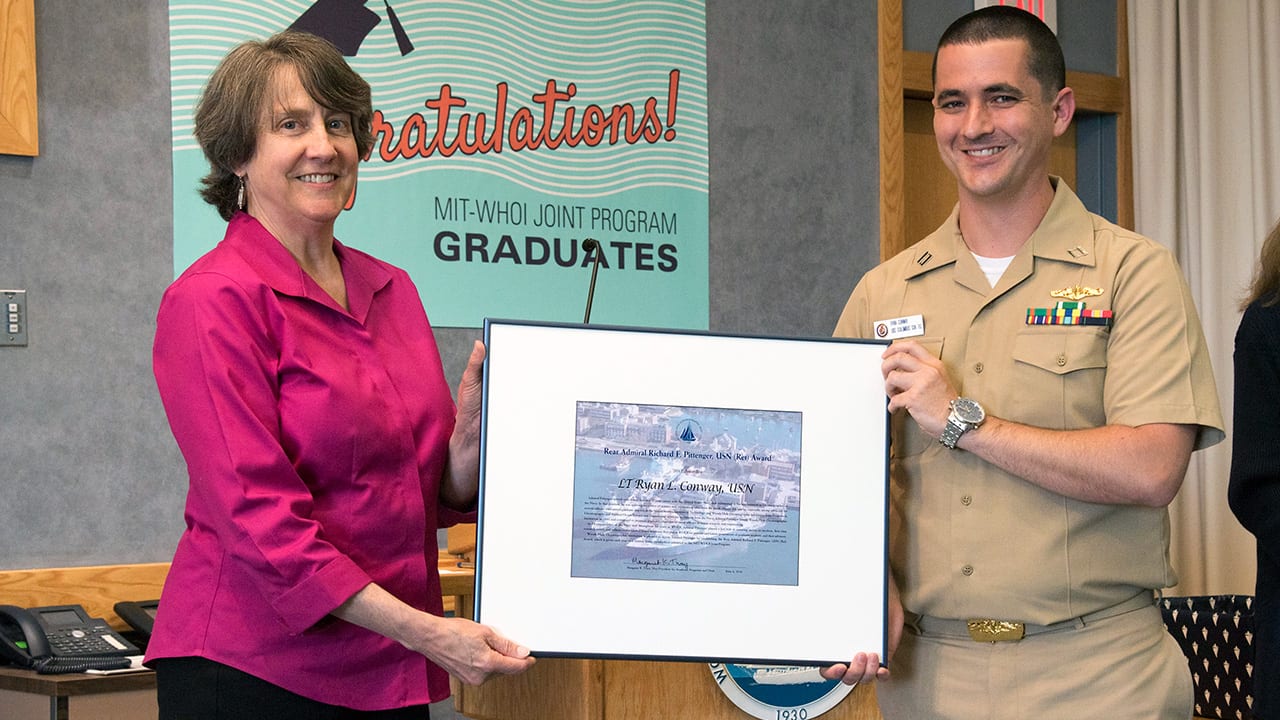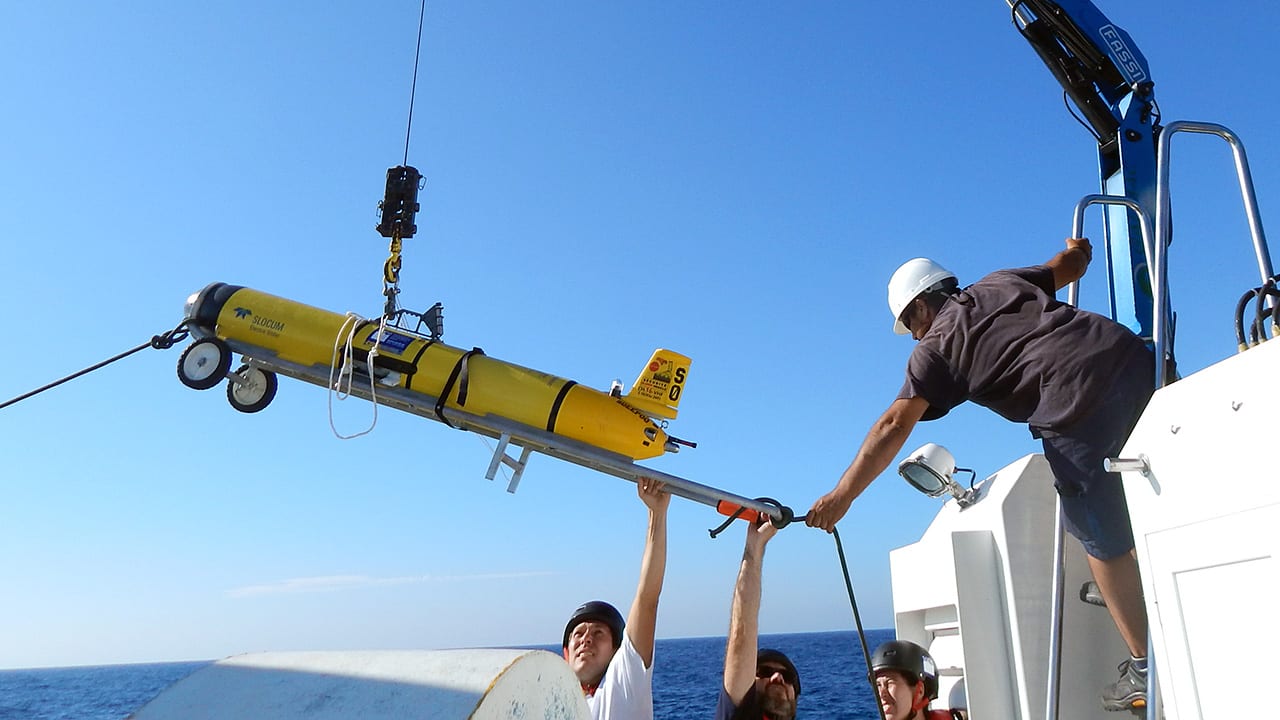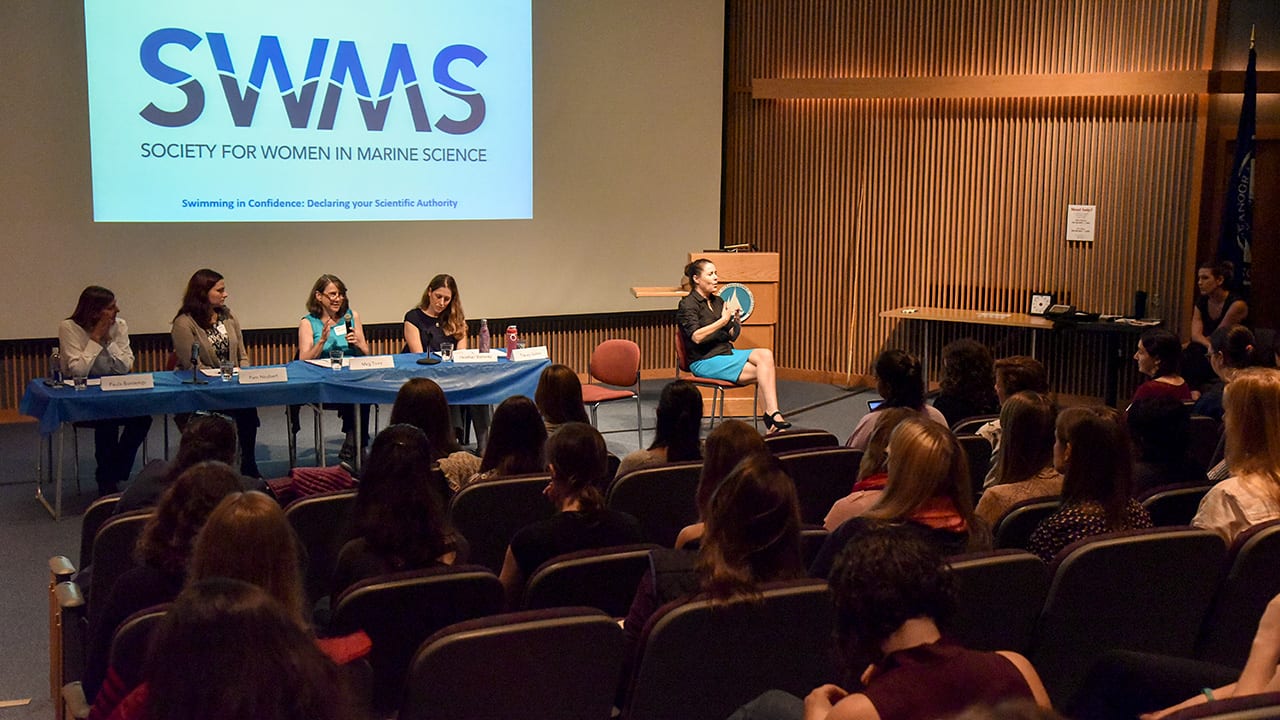Multimedia Items
Swimming in Diversity
The Society for Women in Marine Science (SWMS) brings together scientists, engineers, advocates, and educators to promote the visibility of women in the marine science community and to work to…
Read MoreOur Most Recent Grads
Fifty years after the MIT-WHOI Joint Program in Oceanography was established, the four most recent graduates of the program were awarded degrees in 2018: (from left) Lt. Ryan Conway (Applied…
Read MoreAll Suited Up
Incoming MIT-WHOI Joint Program students take part in a cruise orientation aboard the SSV Corwith Cramer in Woods Hole. The students are wearing immersion or survival suits—thick, neoprene, pull-on wetsuits that provide…
Read MoreForecasting Monsoons
MIT-WHOI Joint Program student Gualtiero Spiro Jaeger snapped this photo from the research vessel Thomas G. Thompson in the Bay of Bengal as a wall of storm clouds swept overhead.…
Read MoreThe Art of Collecting
Instructor Phil Alatalo teaches 2018 Summer Student Fellows (SSF) Brooke Torjman (Muhlenberg College ’19) and Samantha Kenah (Skidmore College ’19) how to deploy a plankton net to collect the tiny…
Read MoreBraving Icy Waters
Someone looking out from the shore of Nanavut, Canada, this summer would have seen this unusual craft making its way through the waters of Cambridge Bay. As its name suggests,…
Read MoreGlacial Secrets
MIT-WHOI Joint program student Matt Osman holds a 2,000-year-old ice core sample that he, scientist Sarah Das, and colleagues drilled from an ice cap in Greenland during a research expedition…
Read MoreDead or Alive?
Horseshoe crabs must shed their hard outer shell, or exoskeleton, to grow, typically molting more than 15 times over the course of a decade before they are fully grown and able…
Read MoreMIT-WHOI Joint Program Celebrates 50 Years
Nearly 100 alumae/i of the MIT-WHOI Joint Program and their families returned to WHOI on July 21 for ship and lab tours, culminated by a cookout, to celebrate the 50th…
Read MoreDisappearing Ponds
WHOI biogeochemist Amanda Spivak samples plant matter in the remnants of a small pond in Great Marsh in Barnstable, Mass. In the 1930s, the Cape Cod Mosquito Control Project dug…
Read MoreGetting a Good Grip
WHOI Mooring Operations & Engineering lead John Kemp (center) and Senior Engineering Assistants Jim Dunn and Meghan Donohue work to add a YaleGrip to an electro-magnetic (EM) cable during a…
Read MoreGulf Stream Waters
Sam Levang, a graduate student in the MIT-WHOI Joint Program, has been studying the Atlantic Meridional Overturning Circulation, a critical component of Earth’s climate system. It transports warm and salty…
Read MoreFresh Water in the Arctic
The Canadian icebreaker Louis S. St-Laurent negotiates thick ice floes near Beaufort Gyre, a major Artic Ocean circulation system north of Alaska. Global warming may be disrupting the natural rhythms…
Read MoreView from Above
The research vessel Neil Armstrong paused at the mouth of Prince Christian Sound in southern Greenland recently so its crew could carry out deck work in sheltered waters. The team…
Read MoreCelebrating Success
The WHOI Center for Marine Robotics (CMR) fosters collaboration between WHOI engineers and scientists and industry sponsors, academic partners, and key government agencies, in order to develop new robotic systems…
Read MoreAnything But a Boat
WHOI held its periodic Anything-But-A-Boat Race on Sept. 16 in Woods Hole, Mass.—a community event that attracted hundreds of spectators. Race rules stipulate that “unboats” must be without boat shells,…
Read MoreLooking for Resilience
WHOI coral scientists Anne Cohen and Pat Lohmann extract core samples from a coral during a recent cruise to Kiritimati (Christmas Island) in the central Pacific Ocean. The scientists will…
Read MoreA Multigenerational Success Story
Since its establishment 50 years ago, the MIT-WHOI Joint Program has had an ongoing multigenerational legacy of training leaders in the field of oceanography. Here, Susan Wijffels, an MIT-WHOI graduate…
Read MoreWash Day
The research vessel Neil Armstrong ducked into Prince Christian Sound last week to take advantage of the calm seas. The ship is currently on a mission to replace a set of…
Read MoreValuable Volunteers
Jim Tynan uses a model of the human-occupied vehicle Alvin in the Ocean Science Discovery Center to inform visitors about the research and engineering that goes on at WHOI. Tynan is a…
Read MoreMission Accomplished
The remotely operated vehicle Jason is recovered after a mission to explore Brothers Volcano in the Kermedec Arc 400 nautical miles off the northern coast of New Zealand. WHOI scientists and colleagues investigated how…
Read MoreOur Newest Pittenger Award Winner
Margaret Tivey, vice president for academic programs & dean of the MIT-WHOI Joint Program, presents Lt. Ryan Conway with the 2018 Richard F. Pittenger Award. It is given annually to a…
Read MorePrepare to Glide
Researchers deploy an underwater glider in the Mediterranean Sea in 2017. MIT-WHOI Joint Program student Mara Freilich and her advisor Amala Mahadevan have been investigating oceanic fronts—similar to meteorological fronts where high-…
Read MoreSWMS Takes on Diversity in STEM
The Society for Women in Marine Science (SWMS) is holding its 2018 Fall Symposium tomorrow (Sat., Sept. 22) in Woods Hole. Last year’s meeting (pictured) focused on women scientists finding confidence in…
Read More
